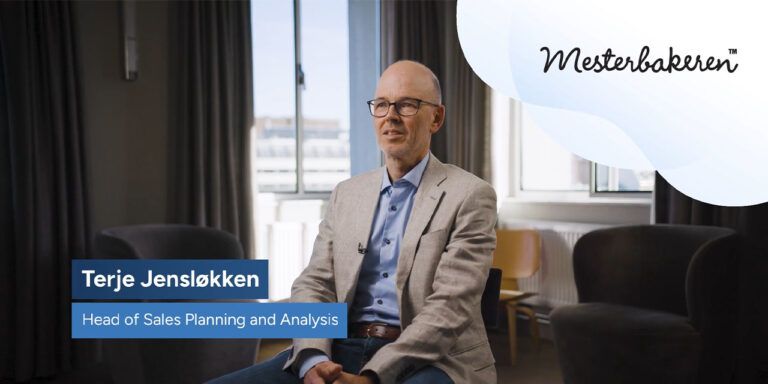Q&A: Constraint-aware planning: Why manufacturers can’t afford to wait
Sep 26, 2025 • 5 min
We sat down with Rohit Tripathi, VP of Industry Strategy & Manufacturing at RELEX, to discuss the urgent need for manufacturers to move beyond traditional planning methods in a world of shifting constraints. Here, he explains why constraint-aware planning has become crucial for business resilience, how modern manufacturing challenges may require reevaluating core strategies, and what is needed to successfully adopt AI-driven planning capabilities.
Listen to the full conversation.
Q: Why has constraint-aware planning become a strategic imperative for manufacturing today?
A: (Rohit) To address your question, margins are shrinking, supply is becoming more unpredictable, and capital investments are under more scrutiny than ever. In this environment, supply chain resilience isn’t optional, it’s a competitive advantage.
Constraint-aware planning gives manufacturers this edge. It allows them to keep production moving even when the unexpected happens, like when there’s a supply shock, a labor shortage, or a sudden demand spike. In short, leading manufacturers are building resilience across their manufacturing processes instead of just reacting to disruption.
Q: Why are traditional approaches to constraint management struggling in today’s volatile manufacturing environments?
A: (Rohit) At a consumer level today, we’re all hyper-connected and reacting to things in much faster timeframes than ever before. The same challenges exist on the manufacturing side, creating issues with visibility and speed.
You can’t fix what you can’t see. Most manufacturers still lack real-time visibility into their bottlenecks. Traditional planning cycles are too slow. By the time a plan gets updated, the disruption has moved on. That’s why production planning lag is far more dangerous than a capacity gap. This is Goldratt’s Theory of Constraints at play, but at a completely different level of complexity.
Read more: How manufacturers can master their end-to-end planning
Q: You mention Goldratt’s Theory of Constraints. How is managing constraints fundamentally different today?
A: (Rohit) I would encourage listeners to revisit Goldratt’s Theory of Constraints, or, if they haven’t read the book yet, to do so. It is a valuable and foundational concept behind production planning.
But to answer your question, when Goldratt was developing the Theory of Constraints, his focus was on one machine, one production step at a time. But in today’s supply chains, everything is so much more networked. We need to remember that these constraints are not just confined within a facility’s four walls, and they’re not just static. They keep shifting. One day, it could be the packaging line. The next day, it’s a missing component or a logistical issue.
In volatile supply chains, the constraint moves. The real winners are companies that can see it, model it, and plan around it in real time. This is precisely what RELEX enables through dynamic constraint recognition across the entire value chain.
Read more: Gaining advance clarity on constraints through scenario planning
Q: How should manufacturers rethink planning strategy when market uncertainty makes fixed push or pull approaches vulnerable?
A: (Rohit) I will take a contrarian view: smart manufacturers shouldn’t pick just one strategy. Instead, they should flex between push and pull approaches based on product-specific risks and demand signals.
RELEX does this automatically, switching between push strategies that optimize available raw materials and pull strategies to respond to real-time demand. For manufacturers, this means their schedules match current reality instead of last week’s assumptions.
Q: How do you balance inventory as a strategic asset against the pressure to minimize it for sustainability and cost?
A: (Rohit) In conversations I’ve had with manufacturers, inventory planning is one area where they consistently struggle. While they don’t want too much capital tied up in inventory, they also don’t want to risk stopping a production line or missing customer demand due to a lack of materials.
The trick is positioning inventory strategically as a buffer that protects production from upstream shocks. This is where RELEX dynamically links inventory buffers to real-time constraints and demand signals. So, you’re not just holding stock, you’re actually putting it where it matters the most.
Read more: Getting inventory planning right in an unpredictable world
Q: What are some real-world examples where constraint-aware planning delivered benefits beyond just efficiency?
A: (Rohit) So, this is where it gets tangible. The first company I’d like to discuss is Atria, a leading meat producer and food company in Northern Europe that achieved touchless planning capability using RELEX.
Through RELEX, they achieved over 98% forecast accuracy, which meant planners touched the systems less often and cut manual adjustments by 13%. This led to fresher meat products hitting retailer shelves and more active collaboration with key retailers. The improved planning accuracy prevents costly mistakes that come with manual intervention.
The second company is Blount Fine Foods, a family-owned manufacturer and marketer of premium prepared foods. Using RELEX touchless planning, they cut food waste by over 35% while improving efficiency by over 2%.
These are more than just efficiency wins. These are real business resilience stories that directly impact service, sustainability, and profitability.
Q: What does the shift from operational scrambling to proactive coordination require from leadership?
A: (Rohit) Beyond selecting the right software platform, this requires a fundamental cultural shift. Leaders need their teams to move away from reactive firefighting toward predictive strategic decision-making in production planning.
This means redefining roles and measuring success with strategic KPIs. More importantly, they need to upskill their planners and give them tools to oversee operations rather than manually schedule, transform data, or create PowerPoints and Excel spreadsheets.
With AI-driven recommendations from tools like RELEX, planners can focus on high-value decisions instead of day-to-day operational firefighting.
Read more: The executive guide to AI-driven production planning
Q: Where should manufacturers focus to achieve constraint-aware planning with AI leading the way?
A: (Rohit) There are three core things to focus on. First, manufacturers must embrace the full spectrum of AI tools. This requires going beyond generative AI pilot programs. Much of the AI in manufacturing is what we at RELEX call specialized AI: machine learning algorithms, predictive capabilities, and probabilistic capabilities embedded in production planning functionalities. These work in conjunction with our generative AI co-pilot, Rebot, which adds additional value.
The next step is AI agents, which some customers are currently piloting. Essentially, manufacturers should expect software solutions to include this comprehensive range of AI capabilities.
Second, manufacturers need to build robust data foundations. AI is only as good as the data it learns from. To ensure quality data, it’s best that all planning functions draw from one data source—like RELEX provides—so everyone works from a single source of truth.
Finally, the most important factor is investment in people. Manufacturers and business leaders must upskill their planners on collaborating with AI. This allows planners to bring their expertise into the system and elevate what AI can achieve throughout their journey. It’s how manufacturers can turn AI from a buzzword into a real competitive advantage. To learn more about touchless supply chain planning, watch our webinar.



